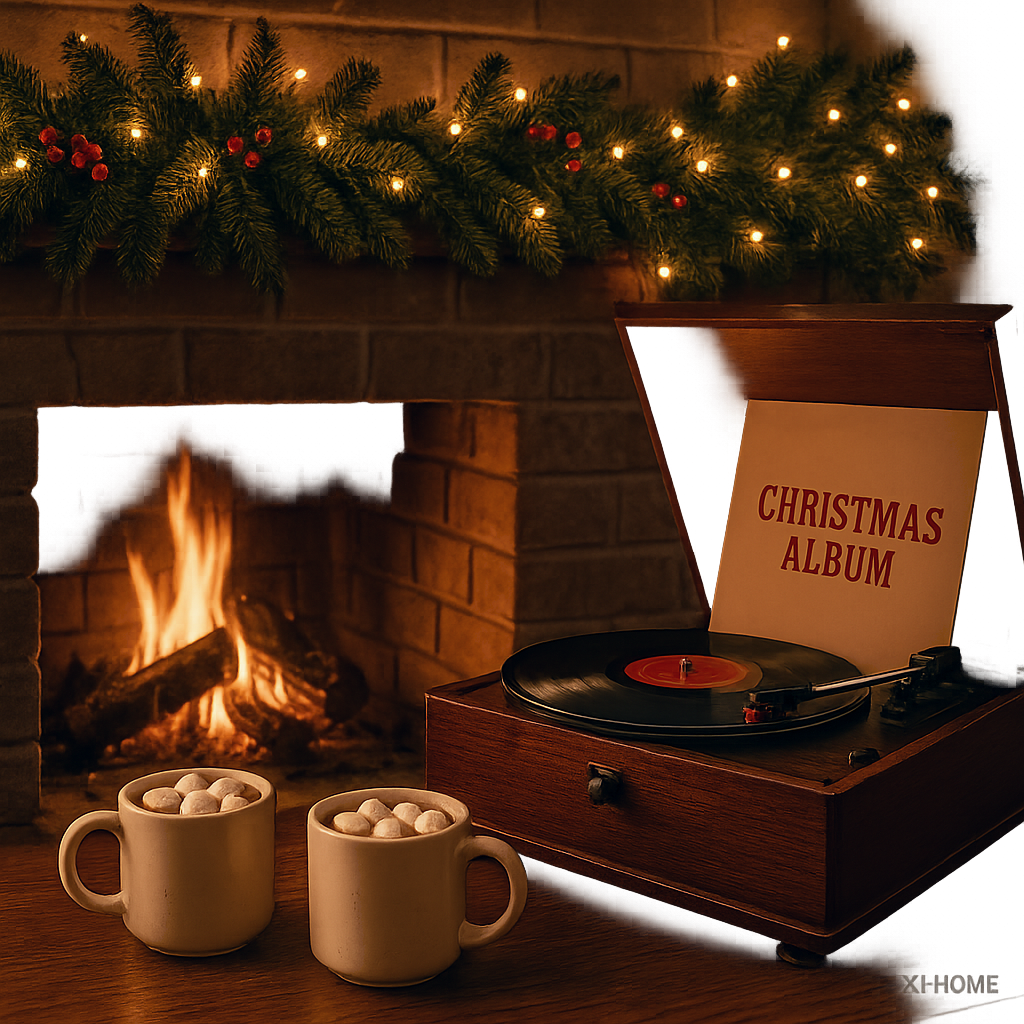There's a unique charm to the 45 RPM record. Whether it's the classic 7-inch single that delivered generations of chart-topping hits or the modern 12-inch audiophile pressing cut at a higher speed for superior sound, playing 45s is an essential part of the complete vinyl experience. While the process is straightforward, understanding the nuances can enhance your enjoyment and ensure you're getting the best possible sound from these faster-spinning discs.
For many, the 45 RPM single was their first introduction to owning music – a tangible piece of a favorite song. For the dedicated audiophile, 45 RPM often signifies a commitment to higher fidelity. Let's explore how to handle these records correctly and why that faster spin can make such a delightful difference.
Part 1: The "Why" – Understanding the 45 RPM Advantage
Before we get to the "how," a quick look at why 45 RPM records exist and why they can sound so good.
-
A Brief History: The 7-inch 45 RPM single was introduced by RCA Victor in 1949 as a direct competitor to Columbia's 12-inch 33⅓ RPM LP format. It was designed to be a more robust and convenient format for individual songs, leading to its dominance in the pop music market for decades. You can read more about this format war and its implications on sites like the Audio Engineering Society (AES) historical archives, which often feature papers and articles on the evolution of recording formats.
-
The Sonic Edge: The primary advantage of 45 RPM over 33⅓ RPM is that the groove passes under the stylus at a higher linear speed. This means more vinyl "real estate" is used per second of music. The benefits can include:
-
Improved High-Frequency Response: Higher frequencies, which are physically smaller modulations in the groove, can be tracked more accurately.
-
Better Dynamics: The increased groove speed allows for louder peaks to be cut without distortion.
-
Lower Distortion: Overall, the tracking is often cleaner.
This is why many audiophile labels press demanding musical passages or entire albums across multiple 12-inch discs at 45 RPM – the pursuit of ultimate sound quality.
-
Part 2: The "How" – A Step-by-Step Guide to Playing Your 45s
Playing a 45 RPM record is simple, but precision matters. Here’s what you need to do:
Step 1: Select the Correct Speed
This is the most critical step. Your turntable will have a speed selector.
-
Locate the Control: This is typically a button (often labeled "33" and "45"), a switch, or on some manual turntables, it might involve physically moving the drive belt to a different pulley on the motor shaft. Consult your turntable's manual if you're unsure.
-
Make the Switch: Change the speed from 33 (or 33⅓) to 45 RPM.
-
The Consequences of Error: Playing a 45 at 33 RPM will result in slow, deep, almost comically mournful sound. Conversely, playing a 33 at 45 RPM will make your music sound like it's being performed by hyperactive chipmunks. Amusing once, perhaps, but not for serious listening!
Step 2: The All-Important 45 RPM Adapter (for 7-inch Singles)
Most 7-inch 45 RPM singles have a large center hole (about 1.5 inches or 38mm across), while LPs and your turntable's spindle have a much smaller hole (around 0.28 inches or 7mm). To bridge this gap, you need a 45 RPM adapter.
-
What it is: This is a small, usually circular, device made of plastic or metal that fits over your turntable's central spindle, effectively widening it to accommodate the larger hole of the 7-inch record. They are sometimes affectionately called "spiders," "inserts," or "pucks."
-
Types of Adapters:
-
Simple Puck/Insert: The most common type. You just place it over the spindle.
-
Snap-On Adapters: Some designs snap onto the spindle for a more secure fit.
-
Built-in Adapters: Some vintage turntables (and a few modern ones) have adapters built into the platter that can be engaged or retracted.
-
-
Using the Adapter:
-
Place the 45 RPM adapter securely over the turntable's spindle.
-
Carefully place your 7-inch record over the adapter, ensuring it sits flat and centered.
-
-
A Note on Quality: While a simple plastic adapter often does the job, some enthusiasts prefer machined metal adapters for a more precise fit or added mass. At XJ-HOME, we appreciate that even the smallest components can contribute to a refined listening experience. Investing in a good quality adapter is a small but worthwhile detail.
Step 3: Handling 12-inch 45 RPM Records
Many audiophile pressings, EPs, or special edition albums are cut at 45 RPM but are 12 inches in diameter (the same size as a standard LP) and feature the standard small center hole.
-
No Adapter Needed: For these records, simply select the 45 RPM speed on your turntable. No adapter is required.
-
The Best of Both Worlds: These pressings aim to deliver the sonic advantages of 45 RPM playback with the familiar handling of a 12-inch disc.
Step 4: Cueing the Record with Care
-
Manual Turntables: Use the cueing lever to gently lift the tonearm. Position the stylus above the lead-in groove of the record (the wider, silent groove at the record's edge). Smoothly lower the cueing lever. If your turntable lacks a cueing lever, you'll need a steady hand to manually place and lower the tonearm.
-
Automatic/Semi-Automatic Turntables: Many automatic turntables will detect the record size (or have a size selector: 7", 10", 12"). If you've selected 45 RPM, and it's a 7-inch record, the tonearm should automatically move to the correct starting position for a 7-inch disc. If it doesn't auto-detect size, ensure you manually cue it to the smaller diameter.
-
Wait for Stable Speed: Especially with some belt-drive turntables, it's good practice to ensure the platter has reached its stable 45 RPM speed before you lower the stylus onto the record.
Step 5: Check Your Settings (Usually No Changes Needed)
For the most part, you do not need to adjust your cartridge's tracking force, anti-skate, or Vertical Tracking Angle (VTA) when switching between 33 RPM LPs and 45 RPM records. These settings are primarily determined by your specific cartridge and tonearm combination.
-
Consistency is Key: As long as your turntable is properly set up for LPs, these settings should generally hold true for 45s. The main variable you're changing is the speed of rotation, not the fundamental interaction between stylus and groove in terms of force or angle.
Part 3: Enhancing Your 45 RPM Ritual
Playing 45s, especially 7-inch singles, can feel like a slightly different ritual than settling in for a full LP.
-
The Tactile Difference: There's something uniquely satisfying about handling these smaller, often more robust discs.
-
Listen for the Difference: Pay attention to the sound. Do you notice the punchier bass, clearer highs, or more dynamic presentation that 45 RPM can offer?
-
Keep it Level: As with all vinyl playback, ensure your turntable is perfectly level. This is always crucial for proper tracking and sound quality.
Conclusion: Embrace the Faster Groove
Mastering 45 RPM playback opens up a vast catalog of music, from historical pop gems to the pinnacle of modern audiophile pressings. It’s a simple skill that adds another layer of enjoyment to our shared passion. At XJ-HOME, we believe that every aspect of the vinyl experience, from selecting the record to the final note, contributes to the magic. You can explore a vibrant community of 45 RPM enthusiasts and discover new releases or rare finds on forums like the Steve Hoffman Music Forums, a great place for all things music and audio.
So, select that faster speed, pop on an adapter if needed, and enjoy the distinct sonic rewards that 45 RPM records bring to your listening room. Happy spinning!





Leave a comment
All comments are moderated before being published.
This site is protected by hCaptcha and the hCaptcha Privacy Policy and Terms of Service apply.